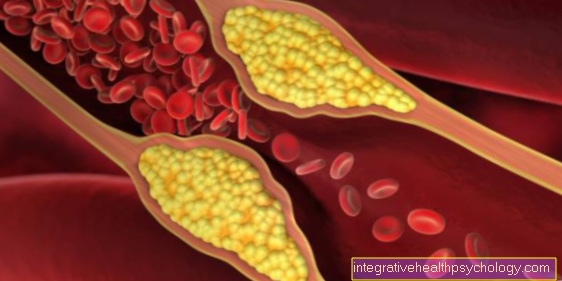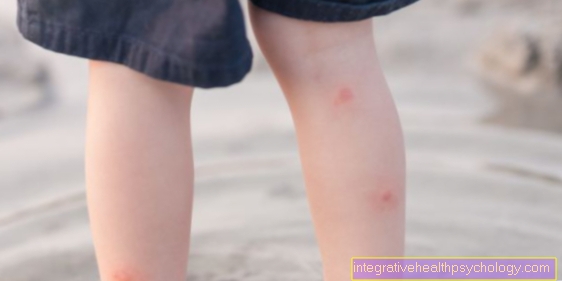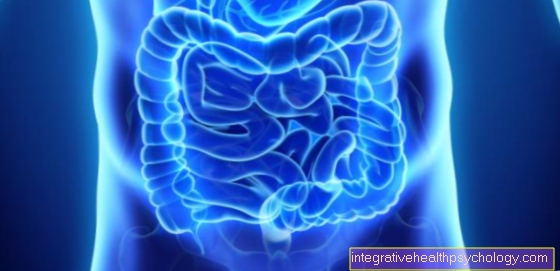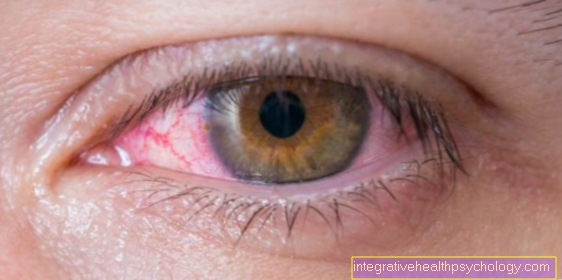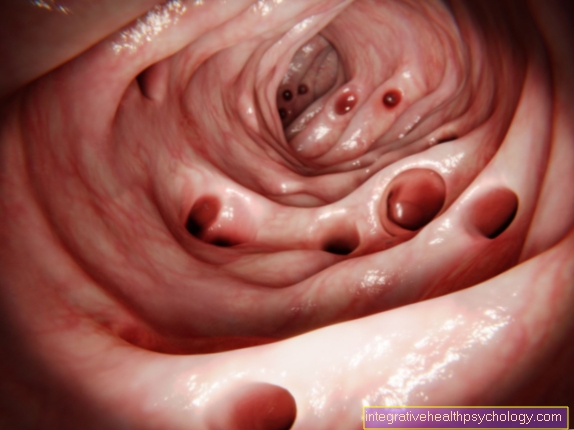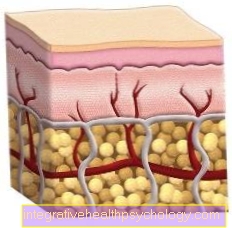Yeast
introduction
Yeasts are one of the most common types of fungus and are one of the unicellular fungi that can grow to around 5-8 µm in size. They can reproduce through sprouting and cell division and can develop pseudomycelia. A pseudomycelium is the name given to the connection between several yeast cells that have arisen through sprouting.
Yeast fungi can also form spores that are very resistant and with which they can survive for a long time in various environments. Many yeasts are often part of the natural skin and intestinal flora and do not have any disease value per se.
However, in certain situations, usually in the case of an immune deficiency, they can become opportunistic pathogens. If the immune system is weakened, yeasts can multiply excessively, attack the skin, mucous membranes and internal organs and cause serious diseases, which will be discussed in more detail below. The most important representative and causative agent of these diseases is Candida albicans.

Are yeasts contagious?
Yeasts can be very contagious, but mostly only if the own immune system or the affected skin / mucous membrane flora is impaired. Yeasts can attack skin and nails, among other things. Infection takes place here mainly through close physical contact or the use of the same towels and laundry. If the nails are infected with yeast, the infection can also be transmitted through shared nail scissors or nail files.
Read more on this topic at: How contagious are yeasts?
Yeasts in the area of the genital organs (e.g. vaginal thrush or balanitis) can be transmitted during unprotected sexual intercourse. If one of the partners is infected with yeast, both partners should always be treated at the same time in order to avoid a "ping-pong effect". Yeasts are not transmitted through toilet seats.
A fungal attack in the mouth occurs mainly in asthmatics or lung patients who are dependent on the intake of cortisone sprays. The cortisone reduces the immune defense in the mouth area and the yeasts can multiply there quickly and cause the symptoms of oral thrush. Infection is possible through sharing toothbrushes or dental care products. A fungal infestation in the intestine usually occurs due to long antibiotic use, but it is usually not contagious.
General information on contagious rashes can be found at: Is my rash contagious?
Causes of yeast infestation
The most important causes of an infection with yeasts are an immune deficiency or impaired skin / mucous membrane flora. Causes for a weakening of the immune system can be a lot of stress, long-term intake of cortisone (see: Cortisone side effects), but also diseases such as leukemia, AIDS or poorly controlled diabetes mellitus (diabetes).
The skin flora can be damaged mainly by excessive showering and the use of strong soaps, which destroy the protective acid mantle of the skin. But even in places where a lot of moisture and heat collects, for example under the breasts, in the armpits, in the groin or under abdominal folds, the skin barrier can be damaged by the constantly increased moisture and pathological colonization with yeasts can occur come.
The intestinal and oral flora can be destroyed by drugs such as antibiotics or cortisone, among other things. The vaginal flora can be destroyed by hormonal changes (e.g. birth control pills), by the IUD or by incorrect and excessive intimate hygiene (vaginal douching or use of soaps) and lead to an increased colonization with yeasts.
Symptoms
Depending on where the yeast infestation takes place, there are different symptoms. If yeasts attack the skin, a red, itchy and painful rash usually forms in the affected areas. Often there are also small pustules or tears in the skin. Yeasts attack skin folds, e.g. under the breasts, in the armpits, the groin, or on the stomach.
Nail fungus, triggered by yeast, usually starts on the nail wall - from where the nail grows out. Whitish spots or stripes often form at the beginning. The nail becomes rough, brittle and crumbly. Over time, the nail bed often hardens and turns yellowish-brown.
Vaginal fungus usually manifests itself as severe burning and itching in the vagina or vulva. The vagina and vulva are usually very red and swollen and a whitish, crumbly discharge can occur. Urination or sexual intercourse can often be painful.
An infection with yeast in the mouth (oral thrush) manifests itself mainly as reddening of the throat and whitish deposits on the oral mucosa or the tongue. If they are wiped off, bleeding is easy. There may also be bad breath.
An infection with yeast in the intestine is rare, but can lead to gas, bloating, nausea, diarrhea and constipation.
Read more on the topic: Yeast infection
therapy

Antifungal drugs are mainly used to treat infections with yeast. These are active ingredients that inhibit the growth of the fungus or kill it. Frequently used active ingredients are for example nystatin, clotrimazole, fluconazole or amphotericin B.
Antimycotics can be used locally as creams, ointments, nail polish and suppositories, or they can be taken in tablet form or as an infusion. In the case of fungal infections of the skin or mucous membranes (oral thrush, vaginitis etc.), antimycotics are mainly used locally. In severe infections with organ involvement, antimycotics are given as tablets or as an infusion.
When treating candidiasis, it is important to ensure that the antifungal agents are used regularly over a certain period of time in order to prevent the fungus from reappearing.
Candida albicans / candidiasis
Candida albicans is the most important and most common representative of the yeast fungi and occurs almost exclusively in humans. 90% of the time, it is the cause of candidiasis, an infection with candida strains. Candida albicans is an opportunistic germ that can be detected in the normal skin / mucous membrane flora of many people and can only trigger a disease in the case of a disturbed flora or a weak immune system.
The most common clinical pictures that can be caused by Candida albicans are vaginitis (vaginal thrush), balanitis (inflammation of the glans due to yeast), oral thrush, diaper rash, and numerous skin and nail infections. In rare cases and with a severely weakened immune system, a systemic infection can also occur - that is, an infestation of the internal organs, such as the esophagus, heart, liver and the central nervous system, which can often be fatal.
Risk factors for a disease with Candida albicans are primarily a weakness of the immune system, chronic wounds, profuse sweating, as well as the constant wearing of air-impermeable clothing or occlusive bandages.
Candida albicans can be reliably detected via a smear, with subsequent examination under the microscope, or by creating special fungal cultures. The mere detection of Candida albicans without symptoms of the disease, however, is not dangerous and does not require treatment.
Candidiasis are treated with antifungal drugs.
Yeast fungus on the skin

Many yeasts are a normal part of the skin flora and have no disease value. Under certain circumstances, however, they can also affect the skin (see: Skin fungus), preferably in places where skin folds lie on top of each other and a lot of moisture and heat is created. Predisposing areas are, for example, under the breasts, in the groin, in the armpits or under belly folds. But the spaces between the fingers and toes can also be attacked by yeast.
The inflamed areas are usually red, swollen, itchy and painful to the touch. The skin often flakes as well. Therapeutically, it helps to clean the affected areas well and keep them dry, as well as to apply antifungal ointments to remove the fungus.
Diaper rash
In babies who still have weak immune systems, yeast infection can manifest as diaper rash. This usually results in a painful, red, itchy and flaky rash on the buttocks, genitals and sometimes even on the thighs, stomach and back (diaper area).
The cause is usually increased moisture due to infrequent diaper changes. As a preventive measure, it helps to change diapers more often, to wash the baby's skin with lukewarm water after changing, to dry it well and to leave the baby without diapers at times. If diaper rash is already present, there are special antifungal pastes that can be applied to the affected areas.
Infestation of the mucous membranes

However, yeast can also affect mucous membranes, for example the vagina (Vaginitis) or the glans (Balanitis) and cause painful infections. Vaginitis or balanitis is mainly caused by incorrect or excessive intimate hygiene, which leads to a change in the mucous membrane flora.
The contraceptive pill, the IUD and the wearing of synthetic, airtight clothing can promote the development of vaginal thrush. The vaginal fungus manifests itself primarily through painful swelling and reddening of the vagina and vulva, through a white, crumbly discharge, as well as severe itching, burning and pain when urinating or during sexual intercourse.
Balanitis (inflammation of the glans) manifests itself primarily through painful reddening and swelling of the glans, painful retraction of the foreskin, and pain when urinating or having sexual intercourse. Both clinical pictures should be clarified and treated by the doctor. Mostly, antifungal ointments or suppositories are prescribed for this. In order to prevent a "ping-pong effect", both partners should be treated at the same time.
Yeast in the gut
Some representatives of the yeast fungi are part of the normal intestinal flora and have no disease value. However, if antibiotics or immunosuppressants are taken for a long time, the normal intestinal flora can be damaged and yeasts and other bacteria can pathologically multiply and cause an infection.
An infection with yeast in the intestine can manifest itself, for example, in the form of gas, bloating, stomach pain, but also nausea, diarrhea or constipation.
An infection of the intestine with yeast is rare. If yeasts are detected in the intestine and the symptoms mentioned above are present at the same time, antifungal therapy can be initiated. However, if only yeasts are detected, without symptoms, this has no disease value.
Nystatin is mostly used for antifungal therapy. Afterwards, it is recommended that those affected rebuild the physiological intestinal flora over a period of 3-6 months. It is also recommended to avoid alcohol, wheat flour products and sweets during this time - as an anti-fungal diet. Whole grain products, vegetables, lettuce and fiber should preferably be consumed in order to support the development of a healthy intestinal flora and the normal function of the intestine.
For further important information please also read: Yeast in the intestine
Yeast on the tongue

Yeast fungi on the tongue can cause oral thrush. This is an infection with Candida albicans in the mouth area, which causes reddening of the throat and whitish deposits on the oral mucosa and tongue. The deposits can be stripped off, but they bleed easily. Thrush is not dangerous in itself, but it can spread to other internal organs, for example the esophagus, or enter the blood and cause serious systemic infections.
Yeast on the tongue occurs mainly in asthmatics or lung patients who depend on the use of cortisone sprays. After inhalation of the cortisone, remnants of the cortisone can remain in the oral cavity and locally lead to a weak immune system. Therefore, the oral cavity should always be rinsed thoroughly after inhaling the cortisone.
Oral thrush can usually be treated topically with mouthwashes, lozenges or suspensions. The toothbrush and other oral care items should be changed to prevent the spread of germs and the recurrence of the infection. Dentures should be cleaned regularly with denture cleaning tablets.
Of course, yeasts in the mouth can also affect the tongue. To find out everything you need to know about yeast in the mouth, read: Yeast mushrooms in the mouth
Recommendations from the editorial team:
- Vaginal fungus
- Yeast on the scalp
- Oral thrush
- Nail fungus
- Diaper rash




















